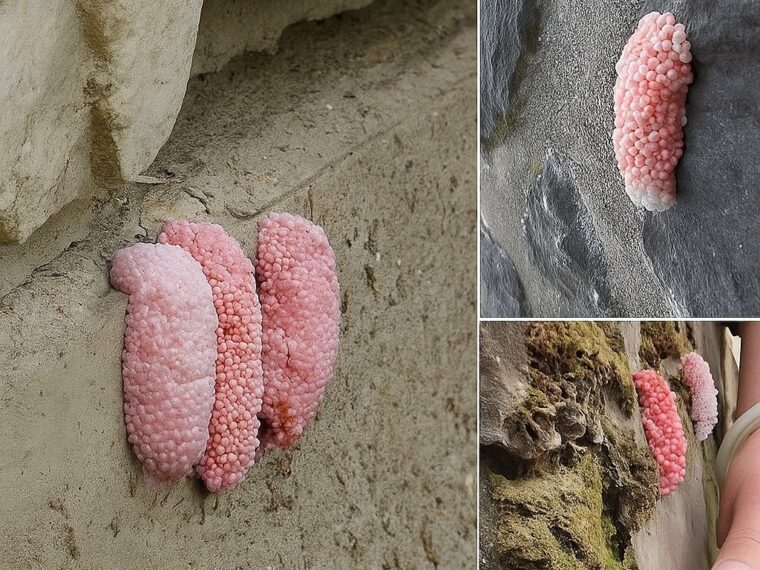The image you see, with its clusters of pink, almost phosphorescent eggs clinging to unexpected surfaces like walls, rocks, or riparian vegetation, can be an intriguing, even fascinating sight. However, far from being a harmless natural curiosity, these egg clusters are actually an alarming sign that you absolutely should not ignore. They belong to a mollusk that represents a major environmental and agricultural threat: the apple snail, or more specifically, the channeled apple snail (Pomacea canaliculata), a formidable invasive species.
The Apple Snail: A Silent Invader
Originally from South America, apple snails have been introduced to many parts of the world (Asia, Europe, North America, etc.) for various reasons, including as aquarium pets or for aquaculture. Unfortunately, their extraordinary adaptability and reproductive capacity have made them one of the most destructive invasive species on the planet.
Why Are These Pink Eggs a Problem?
Uncontrollable Proliferation:
Each egg clutch, like those visible in the image, can contain hundreds, or even thousands, of eggs. A single female can lay thousands of eggs in her lifetime. This massive reproductive capacity allows for rapid and explosive colonization of new environments.
A Threat to Agriculture:
The apple snail is a voracious herbivore. It literally devours aquatic and semi-aquatic crops, especially rice, which is the staple food for billions of people. Infestations can wipe out entire harvests, causing devastating economic losses for farmers. It also attacks other vegetable and ornamental crops near water.
An Ecological Danger:
By consuming aquatic vegetation, these snails disrupt the balance of ecosystems. They can displace native mollusk species, alter fish and bird habitats, and modify water quality. They are also potential carriers of parasites, such as the rat lungworm, which can affect humans.
Non-Aquatic Eggs:
One of the unique features of the apple snail is that it lays its eggs out of water, usually on vertical surfaces like walls, pilings, emergent plants, or rocks, as clearly seen in your image. This strategy protects the eggs from aquatic predators and facilitates their dispersal by currents or even human activity. The vivid pink color is a defense against certain predators that avoid them.
What to Do If You Spot These Pink Eggs?
If you spot these pink egg clusters in your environment (near a waterway, pond, rice paddy, or even in your garden if you are in an affected area), it is crucial to act responsibly:
TO CONTINUE READING THE ARTICLE PLEASE SEE PAGE 2




